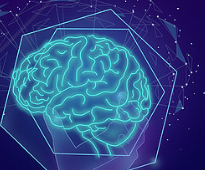worldpharmanewsMay 06, 2019
Tag: Alzheimer , Dementia , brain
A brain disorder that mimics symptoms of Alzheimer's disease has been defined with recommended diagnostic criteria and guidelines for advancing future research on the condition. Researchers at Rush University Medical Center and scientists from several National Institutes of Health-funded institutions, in collaboration with international peers, described the newly-named pathway to dementia, Limbic-predominant Age-related TDP-43 Encephalopathy, or LATE, in a report published in the journal Brain.

"We proposed a new name to increase recognition and research for this common cause of dementia, the symptoms of which mimic Alzheimer's dementia but is not caused by plaques and tangles (the buildup of beta amyloid proteins that Alzheimer's produces). Rather, LATE dementia is caused by deposits of a protein called TDP-43 in the brain," said Dr. Julie Schneider, senior author of the Brain paper and associate director of the Rush Alzheimer's Disease Center.
Alzheimer's, the most common form of dementia, causes loss of cognitive functions --especially memory, but also --results in changes in everyday functional abilities and behavior. In the past, most cases of dementia with memory loss were assumed to be Alzheimer's disease.
Now there is growing appreciation that a variety of diseases and disease processes contribute to dementia with memory loss. Each of these diseases appears differently in brain samples examined at autopsy of people who died with these conditions.
It has become increasingly clear that in advanced age, a large number of people had symptoms of dementia without the telltale signs of Alzheimer's disease in their brains at autopsy. Emerging research seems to indicate that TDP-43, while not a stand-alone explanation, is a large contributor to that phenomenon.
The function of normal TDP-43 (transactive response DNA binding protein of 43 kDa) is related to how cells use DNA to make proteins. In disease, TDP protein becomes misfolded (abnormally structured) and moves from its normal location in the cell. Abnormal TDP-43 was first recognized in amyotrophic lateral sclerosis and frontotemporal lobar degeneration, relatively uncommon diseases.
Recent research shows that misfolded TDP-43 protein is very common in older adults. Roughly 25 percent of individuals more than 85 years of age have enough misfolded TDP-43 protein to affect their memory and/or thinking abilities.
The authors wrote that LATE is an under-recognized condition with a very large impact on public health. They emphasized that the "oldest-old" are at greatest risk, and they believe that the public health impact of LATE is at least as large as Alzheimer's in this group.
The clinical and neurocognitive features of LATE affect multiple areas of cognition, ultimately impairing activities of daily life. Based on existing research, the authors suggested that LATE progresses more gradually than Alzheimer's. However, LATE combined with Alzheimer's - which is common for these two highly prevalent brain diseases - appears to cause a more rapid decline than either would alone.
A key recommendation was for routine autopsy evaluation and classification of LATE. The researchers suggest the autopsy diagnosis be in three stages, according to where in the brain TDP-43 is detected:
Additional recommendations include highlighting the great need for the development of biomarkers to increase recognition during life, further pathological studies, and the generation of new animal models for studying LATE. Suggestions were provided for possible strategies to help guide future therapeutic interventions, including the importance of removing subjects with LATE from clinical trials of Alzheimer's treatments, which could significantly improve the chances of successful Alzheimer's breakthroughs. The researchers also discussed the importance of more epidemiological, clinical, neuroimaging and genetic studies to better characterize LATE, and the need for research in diverse populations.
"As we continue to make large strides in our understanding of memory loss and dementia in aging, we have renewed confidence that we will be able to work towards a more individualized approach to preventions and treatments," said Schneider.
Peter T Nelson, Dennis W Dickson, John Q Trojanowski, Clifford R Jack, Patricia A Boyle, Konstantinos Arfanakis, Rosa Rademakers, Irina Alafuzoff, Johannes Attems, Carol Brayne, Ian T S Coyle-Gilchrist, Helena C Chui, David W Fardo, Margaret E Flanagan, Glenda Halliday, Suvi R K Hokkanen, Sally Hunter, Gregory A Jicha, Yuriko Katsumata, Claudia H Kawas, C Dirk Keene, Gabor G Kovacs, Walter A Kukull, Allan I Levey, Nazanin Makkinejad, Thomas J Montine, Shigeo Murayama, Melissa E Murray, Sukriti Nag, Robert A Rissman, William W Seeley, Reisa A Sperling, Charles L White III, Lei Yu, Julie A Schneider.
Limbic-predominant age-related TDP-43 encephalopathy (LATE): consensus working group report.
Register as Visitor to CPhI China 2019!

-----------------------------------------------------------------------
Editor's Note:
To apply for becoming a contributor of En-CPhI.cn,
welcome to send your CV and sample works to us,
Email: Julia.Zhang@ubmsinoexpo.com.


Contact Us
Tel: (+86) 400 610 1188
WhatsApp/Telegram/Wechat: +86 13621645194
Follow Us:




 Pharma Sources Insight January 2025
Pharma Sources Insight January 2025


